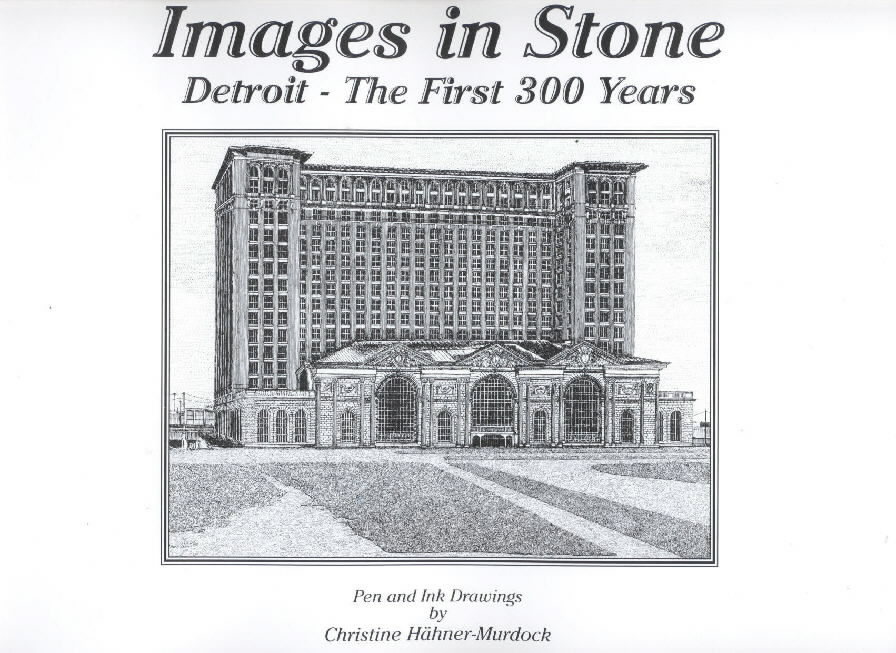|
|
|
 |
IMAGES IN STONE - Detroit. The first 300 years |  |
|
 |
|
|
for orders, please send an email to mmadroom@aol.com (US and worldwide) was $35.00 now $25.00 (+$5 shipping/handling) The original drawings of the book may also be purchased. Please send an inquiry to mmadroom@yahoo.com Michigan Central Station (available as print 17"x21", limited ed of 1,000, signed/numbered, $75 - to order contact mmadroom@yahoo.com) Located on Vernor and Michigan Ave. When driving on I-96 into Detroit, you see a monumental building. Still beautiful, despite the fact, that all its windows are broken and there are obvious signs of decay. It is the Michigan Central Station, a subject of heated dispute and politics. Everyone agrees that the train station, designed by architects Warren & Whetmore, who also designed New York's Grand Central Station, is worth restoring, but the costs involved let even the most ambitious ideas run cold. The Michigan Central Station has become a symbol of Detroit’s way of dealing with its beautiful architectural heritage: caught up in politics and pushing up the renovation costs with each decade of abandonment. The building's present owner Manny Maroun also owns the Ambassador bridge, which connects Detroit to Windsor and is to be commended for his firm commitment to the building's eventual restoration for a great new function and purpose. The Roosevelt Park grounds in front of the train station came about through the "City Beautiful" Movement in urban planning of the early 20th Century. The first train left Michigan Central Station December 26, 1913. The last train departed on January 5, 1988. The building was permanently closed later that day. The Michigan Central Station’s Beaux Arts design has left a lot to scavenge for raiders, who easily got access to the premise. Graffiti artists also made use of the Station their own way. Christine Murdock, Richard G. Thibodeau |
|
|
Preface One of our choices for the subtitle of the book was "Detroit Through the Eyes of a Stranger". The first time I visited Detroit was in 1999. I remembered the impression I got, when my husband, a native Detroiter, drove me through downtown. Expecting busy street scenes that you are used to see in the American movies, I was surprised: "Where were the people? What happened in this city? There was beautiful architecture everywhere, but half the windows were boarded up." A few years passed. In this time I learned about Detroit’s history, it’s specific challenges as one of the "chocolate cities", and the politics that drove people from downtown into suburbia. But even given all its problems, I was stunned by the fact that there is so much beautiful architecture in the city, and that much of it is left to decay. Having studied architecture in France and England via pen and paper, I started portraying the city according to its potential. I met people who shared my point of view and helped me gather information. To make things a bit more interesting, we also included some odd historical stories. After all buildings are like people. They are not just born and die (sooner or later), but they all have their own stories, which gives them personality. There are many, many more buildings and sites that should have been included in the book, but we do not claim completion in any kind of way. You should however be able to find representative buildings of each sort in it. It would be a shame, if Detroit doesn’t find the resources to preserve its architectural heritage, since what is torn down will never come back! Christine Murdock
Introduction Richard G. Thibodeau
Excerpt "Images in Stone - Detroit. The First 300 years" Send an email |
|